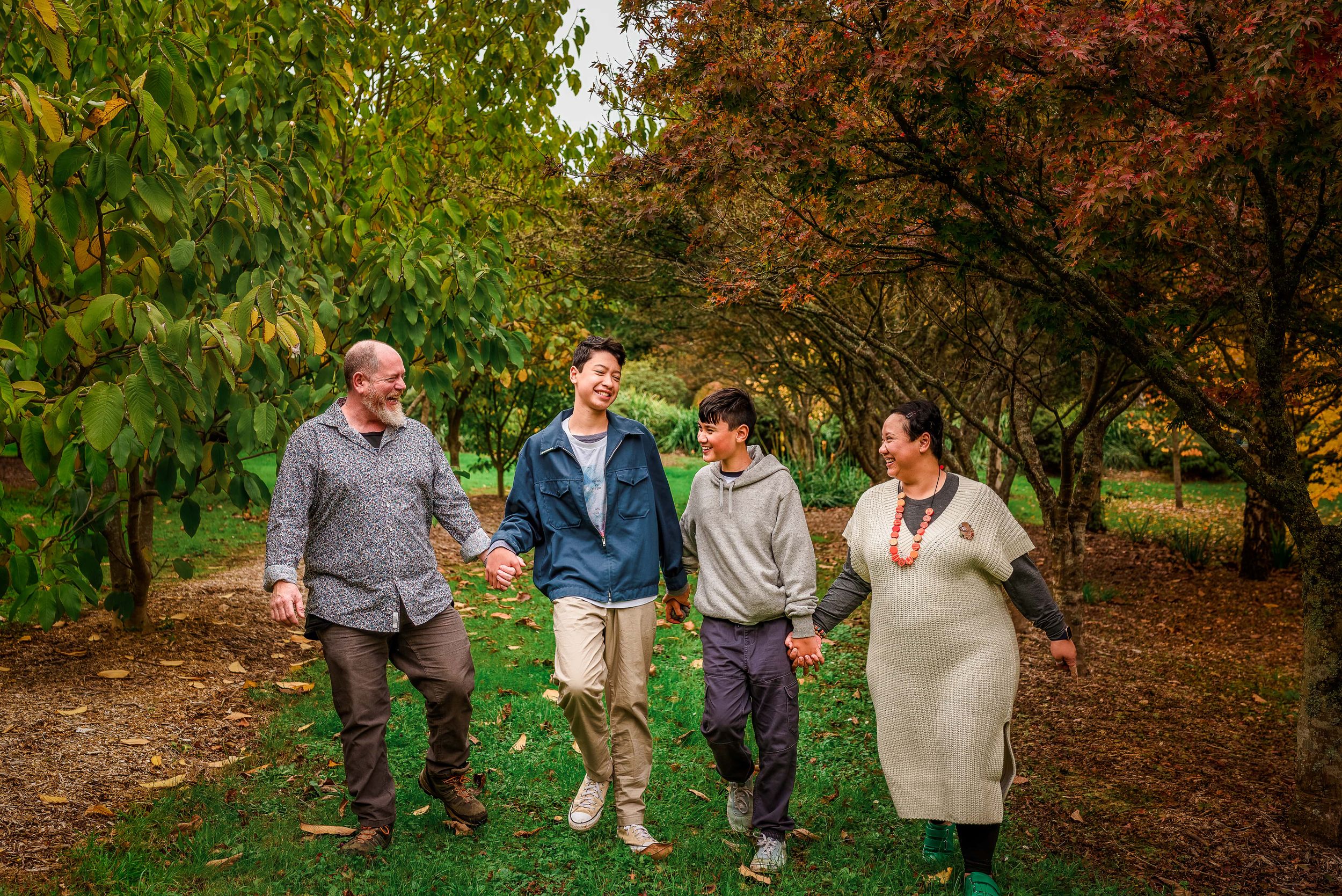
AN INTERVIEW WITH FAMILY PHOTOGRAPHY CLIENT TUTIE WILMOTT
As a mum and a photographer I hate to think that families don’t get photos taken because it is overwhelming or just too hard. However, I also know that for many Melbourne families with members who have special or additional needs this is just what happens. I understand this personally as my own son had additional medical needs as a baby. He was born with a life threatening respiratory condition which required oxygen, CPAP and ultimately airway surgery. When you are in the trenches juggling medical appointments, finances and just life it is no surprise that photographing your family can be put in the too-hard basket. Luckily for us my son is now healthy, but I appreciate that for many families in Melbourne managing their members’ special or additional needs is a life-long proposition.
Prior to becoming a family photographer in Melbourne I worked as a specialist investigator as a detective with Victoria Police. As part of this work I completed additional training in communicating and engaging with adults and children with cognitive and special needs. The years of doing this work allowed me to develop the ability to quickly establish rapport and trust with those with additional needs and this is a skillset I now bring to my photography.
I was therefore thrilled when Tutie contacted me to arrange a session for her own family. Her 12 year old son John is on the autism spectrum. She and I bonded and wanted to use this platform as a way to share her family’s experience and what service providers can do for families like hers.
1. You are the mum of a child on the autism spectrum. What is that like?
Every day I get to see the world from a different perspective and lens. A view that unless you have an experience of autism in your world, you are likely to miss. This is because of those subtle nuances of social communication and norms which autistic people, don’t innately understand or connect. This lens is such a privilege and allows me an insight to my son’s world. However, there needs to be a balance for him, as society doesn’t always agree or see the world in the same way, and he needs to be able to engage in a social world.
So, in isolation and on good days, this extraordinary autism framework is so amazing. It teaches me so much about life and the world. However, when it is compounded, constant and relentless, it can be really exhausting.
It also means that every day is different and dependent on his sensory, emotional, and psychological state. He has a very specific set of rules that he perceives everyone should abide by, with no grey areas. This in turn means our household needs to be super organised, so that he can easily predict each day. We do a lot of therapeutic work, so for the days when he cannot control his routine or external factors impact on his wellbeing, he can engage and implement the learnt therapeutic strategies to keep himself safe.
2. What would you like society, in general, to know about autism?
As autism is a spectrum, there is such a breadth of differing presentations, behaviours and types. It is also dynamic and individual for person, which can make strategies to understand and support challenging.
So instead of in-depth psychoeducation for society around ‘what autism is’ and a checklist of ‘standard autism traits’ I would love to see society change to be one that is just inclusive and accepting of ALL abilities, differences, cultures and identities and so that everyone is safe to be who they are and feel like they belong.
If our society held that fundamental underlying principle – then it wouldn’t matter about the nuances of autism, because everyone would be accepted for who they are individually and make safe spaces for those who require them when engaging with society.
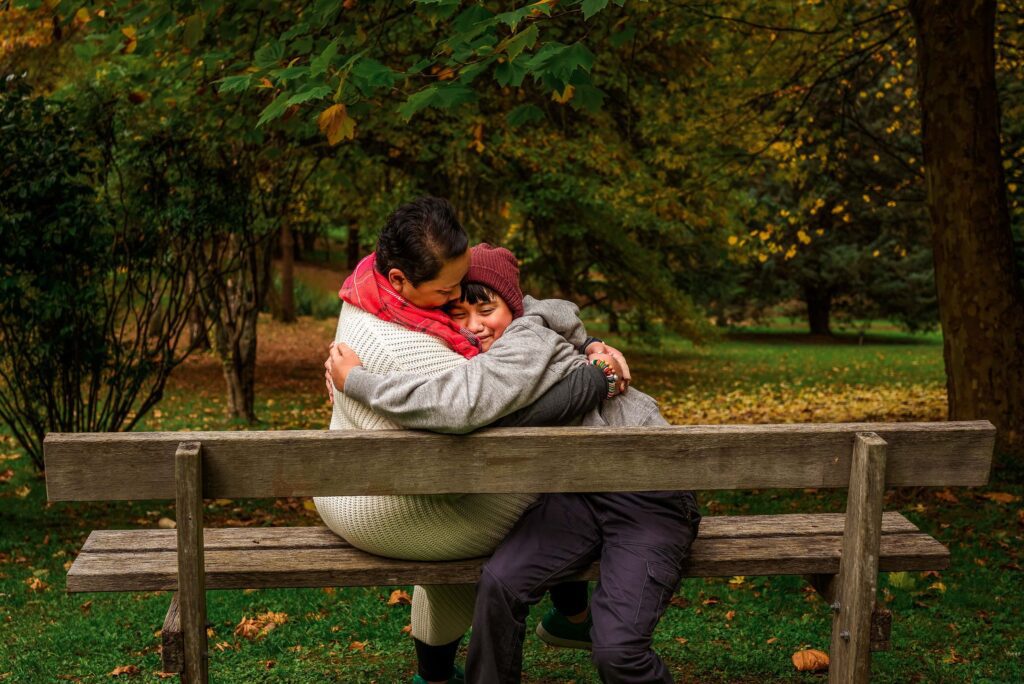
3. What sorts of things make life easier for children like your son?
A predictable daily routine that is visually accessible with daily checklists. This is important as his executive skills are significantly lower than his neurotypical peers, so he finds preparation and 3 step instructions challenging. We have visual timetables and checklists located around the house, as reminders and prompts, to support him building up his capability and capacity in this area.
This also supports him in identifying events that might trigger him during the day (sensory, time-based activities, not understanding a task or someone that might break his ‘rules’) and to mitigate situations where he might engage in inflexible thinking patterns of behaviour.
Sensory items like Blu-Tak – which he is obsessed with, as this is a grounding, safety, and self-regulation tool for him. He takes his Blu-Tak with him everywhere and is always moulding or playing with it in his hands. He makes various creations with it and engages extensively in imaginative play and self-talk with his Blu-Tak as a catalyst and focal point. Sometimes it is a creature that can defeat evil and sometimes it is a dinosaur,. They were his very first obsession and he could pronounce dinosaur names before he could successfully communicate with family members.
Other sensory items that are important for him are noise-cancelling headphones. He will wear them with one ear on and one ear off. That way he can still hear what is happening around him, but then isolate what he is listening to on his iPad. Weighted blankets and soft toys are always surrounding him and provide him with deep compression and reassurance. We have noticed throughout the years that he has a high tolerance of pain and can’t feel a lot. Therefore any added pressure assists him in his sensory seeking behaviour and provides a vehicle for self-regulation.
4. What can service providers do to better support families with a member on the autism spectrum?
Again, coming back to the underlying attitude that society has around disability and discrimination. If service providers embedded an organisational culture and service delivery framework, that is inclusive and safe for all abilities, cultures, and identities then autistic client users would feel safe and welcomed into that space. However, societal attitude and change can take a long time, and is created through systemic and structural change – which under the current federal government seems unlikely.
So, if client users are autistic, then that service provider should engage in a psychoeducation program for all their practitioners to become familiar with autism traits, needs, challenges and barriers from organisations including the national Autism Spectrum Australia and locally Amaze.
They should also audit their organisation against the National Disability Standards for Disability Services to ensure it is accessible, safe, and inclusive for all people with all abilities.
Once they have reached an internal competent level it is fundamental to engage and consult with peak bodies in the disability sector. This ensures that they are reaching the standards as set by those in the community. Specifically, to autism, service organisations should provide quiet breakout rooms or areas where families can retreat to if their child becomes overwhelmed. Sensory items should be readily available for families to assist with self-regulation.
The use of infographics or pictograms to visually explain the service/organisation, including information that has clearly stepped out and identified what a family can expect from the service so that they can prepare their child before coming in.
It is really dependent on the family and their individual child’s needs, so it would be great for service providers to firstly ask the family if there are any special requirements, needs or information that they could provide which will assist them in ensuring that the child will feel welcomed.
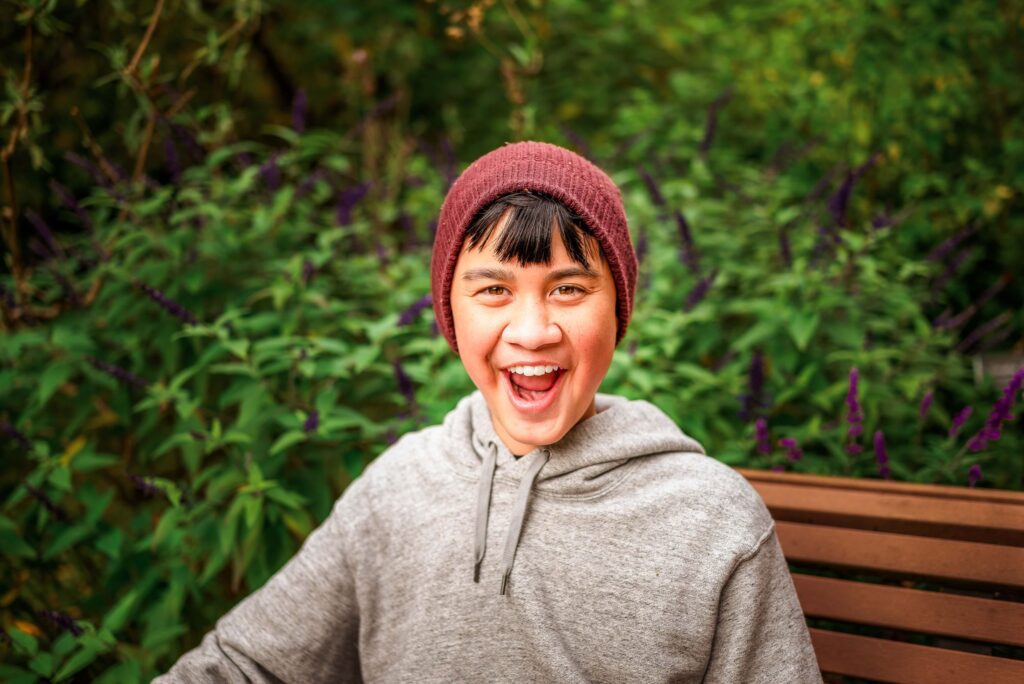
5. When booking a photoshoot were there any special considerations or criteria for you?
We don’t normally do professional family photos, as our son finds it very challenging. I however wanted photos to capture the milestone of both our sons being in high school and the stunning Mount Dandenong environment where we are so privileged to live on and care for. I had been carefully following Kate on social media. I could see that she was very family orientated (which is always my focus and criteria) and that her photo style was exactly what I was searching for.
Factors that I considered was that I wanted to engage with a local photographer. I needed the environment to be familiar for our son and somewhere quiet, which is difficult living in an area which is quite tourism based. Time was also a factor to consider, as he might have sensory issues on the day of the photo shoot. It could either be ‘get the photos taken as quickly as possible’ – which is how we manage haircuts, or ‘can we have more time’ as he isn’t responding or wanting to communicate/engage. Then finally, he would have to be bringing his Blu Tak, which we hoped wouldn’t be an issue.
All these factors really came down to ensuring that our chosen photographer would be able to be flexible, aware, and understanding and be a great communicator – strengths that Kate had in abundance.
6. How did your family prepare for your session?
Kate requested that I fill out a very comprehensive questionnaire, but even prior to that I flagged with her in our initial conversations that we had a special needs son. She was so accommodating and understanding and wanted to know as much information as possible so she could prepare and ensure that John felt safe and happy.
We also discussed his obsession with Blu-Tak and Kate had a brilliant idea to use his Blu-Tak creations as a focal point for some of the photos. As part of that project, I discussed this with our son and began to prepare him for a family photoshoot. I reassured him that not only could he bring his Blu-Tak, but that Kate wanted to highlight it and if he gave permission, to keep all his creatures so that Kate could take photos of them.
We find that the more information, preparation, and time that we give him, the better the outcome as he can predict what is going to happen and has time to be OK with it. Unfortunately, he was having a difficult time adjusting to high school, so we were unable to save his Blu-Tak creations. As we got closer to the photo shoot time, we kept reminding him about the event and answering any questions that he had to mitigate any potentially issues that could arise on the day.
Kate and I chose the location based on how many people were going to be there, space for him to move around with and of course the stunning autumn colours of the beautiful Dandenong Ranges on Wurundjeri land.
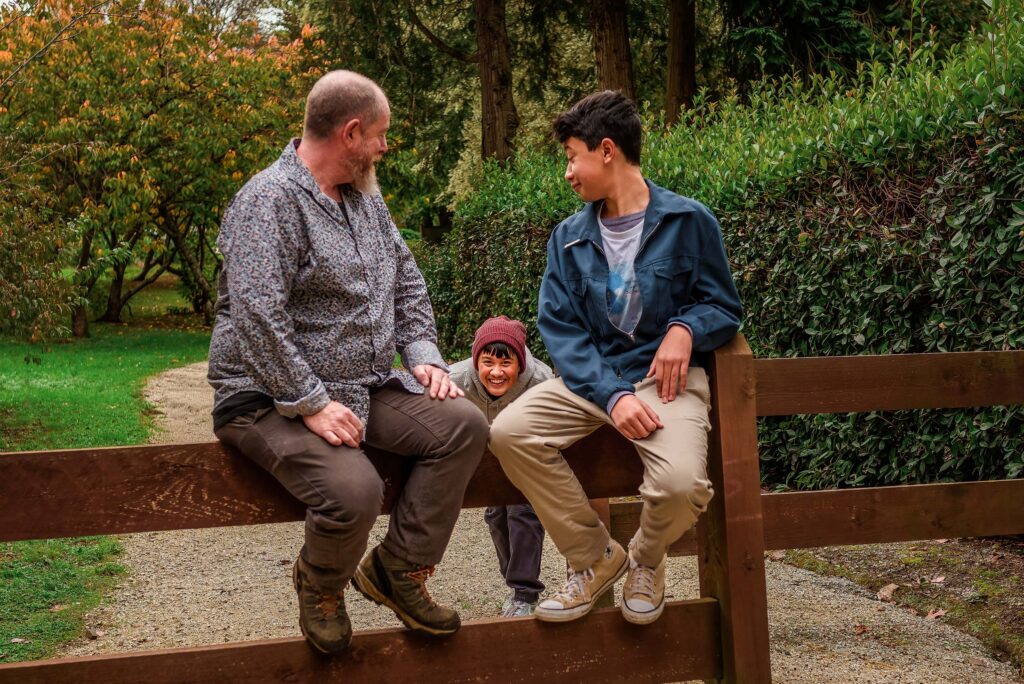
7. What was the experience of a professional photoshoot like for you and your family?
We had an absolutely amazing time and Kate reassured us from the start that we had as much or as little time as needed based on our son’s needs and mood. On the day, he was ready to engage, and we took the first option of the longer time and were able to enjoy the time and space for Kate to capture the essence of our family.
Kate introduced herself to our son and it was an instant connection as she shared something special with him and he allowed her to enter into his world. He showed her his Blu Tak creation that he had been working on for a few weeks. His individual photos were first. He was then able to walk away and play when he needed time and space and then would come, centre himself and be ready for the family shots.
The use of Kate’s language and ability to ‘see’ the person assisted immensely in her ability to connect with our son. I was able to just enjoy the time with my family and even take a step back and observe my son laughing and smiling and not have to be the parent who must always respond to his challenges.
We all found the whole day such an enriching family experience and Kate’s stunning pictures echo that same sentiment.
8. How can business owners best let families in the autism community know that they are supportive and want to be accommodating of families they may have additional or special needs?
An organisation should identify what their belief and approach is as a business towards ‘disability’ and map out how their service is inclusive and what they do to accommodate their special needs clients. It is useful for the business to communicate this approach by developing an inclusion statement which steps out how their service achieves that commitment and caters for disability.
The organisation should also develop autism friendly resources specific to the service they provide and provide links as well as other national resources that connect with their business platform.
This information needs to be clearly identified on their website, and they can also engage with local and national autism networks through social media. The business could support local autism events and ensure they have a presence in the disability community, so that they are known to be inclusive and accommodating to special needs families.

9. Finally, what are the social issues that matter most to your family?
In our family we always talk (and hopefully lead by example) to our children about the ethical responsibility that they hold to contribute and build an equally just and safe society for everyone. We talk about equity and equality for BIPOC, women and girls, disability, and the most vulnerable and at-risk communities in our society.
We raise our children to be aware of consent and what that means and try to embed into their own personal value system that they treat their peers, friends, family and especially strangers with respect and dignity, which is fundamental to existing and being a part of a community. Over the past few years, we have really focused on sustainability in our household and changed a lot of old patterns of behaviour to conserve and care for Land.
When you come to our front door, there is an acknowledgement to Country plaque, along with other cultural items that are meaningful and connect to our family heritage. People of all abilities, genders, identities, sexual orientation, races, cultural and spiritual beliefs are welcome. We have the understanding that we all strive to reach happiness and want to belong, so we need to create the space, freedom, and support for everyone to be authentic to who they are meant to be, as long we are not harming anyone in the process.
In our family we acknowledge, promote, and celebrate each person’s differences. It is because of those differences that create such a rich, complex, and colourful world where if you allow yourself to see and walk in other people’s shoes, you will learn how amazing the breadth of humanity really is.
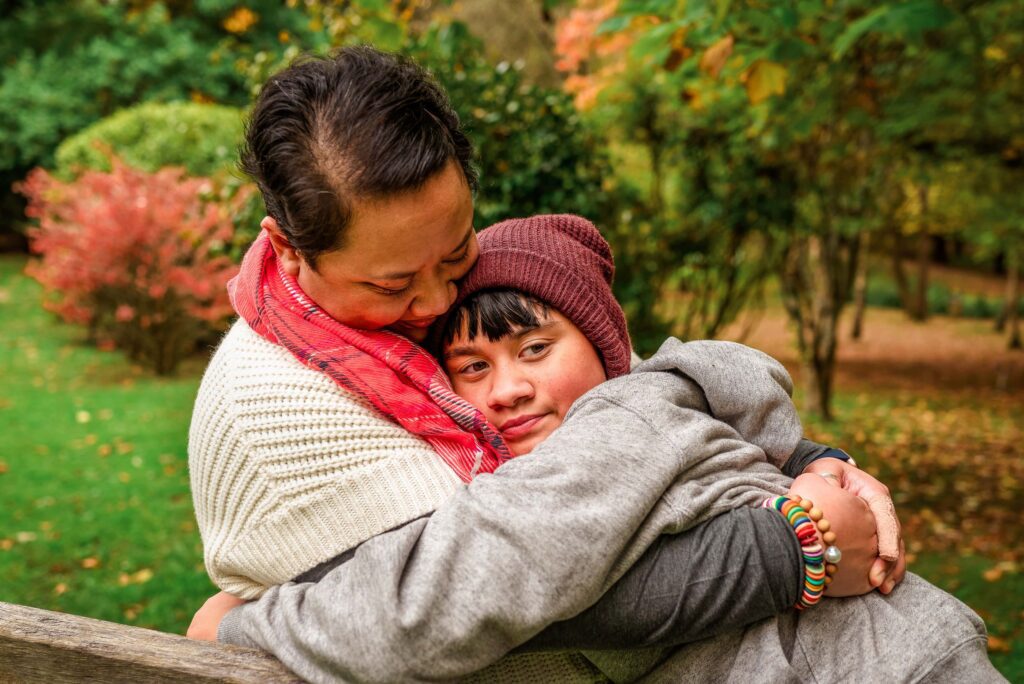
COMMENTS